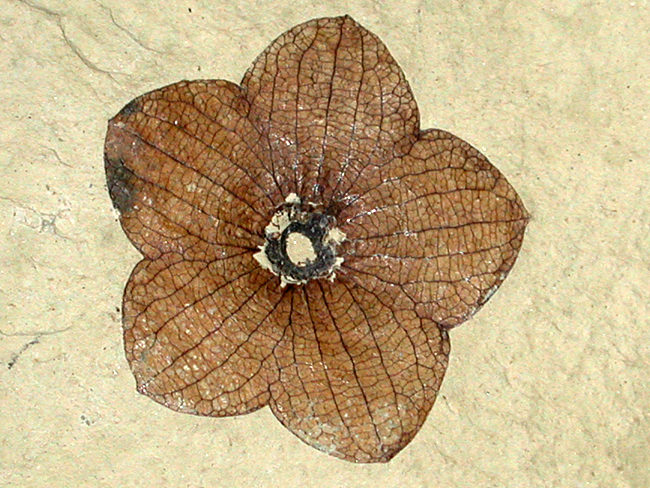Lisa Barksdale, former Stonerose Curator, and Wes Wehr, former paleobotanist for the Burke Museum, found this amazing lobed Florissantia quilchenensis. This specimen was pictured in the National Geographic magazine in July 2002 in an article titled “The Big Bloom,” because of its amazing beauty. As the Florissantia is the logo for Stonerose, many mistakenly believe it is related to the Rosaceae (rose) family. However, this flower was chosen for our logo because of it’s striking good looks.
Florissantia quilchenensis is an extinct flower species found in western North America. This flower is part of the Malvaceae Family, which also includes the Cocoa (chocolate) and Mallow (marshmallow) plants. The best preserved specimens of Florissantia are found in at the Stonerose fossil site. Fossil Technical Description The genus Florissantia is based upon flower and fruit compressions reported from the Eocene of Colorado, Montana, Washington (Republic), and British Columbia and Eocene to Oligocene of Oregon. The flowers are large, 1 to 2 inches (2.5 to 5 centimeters) across, and borne on long pedicels. They are composed of sepals that are fused along their margins forming five lobes and include an ovary above the floral parts (superior), a single style with five stigmas surrounded by five stamens having bifurcated filaments (not shown). (Tidwell, William D., Common Fossil Plants of Western North America. p 151. 1998.)
More
